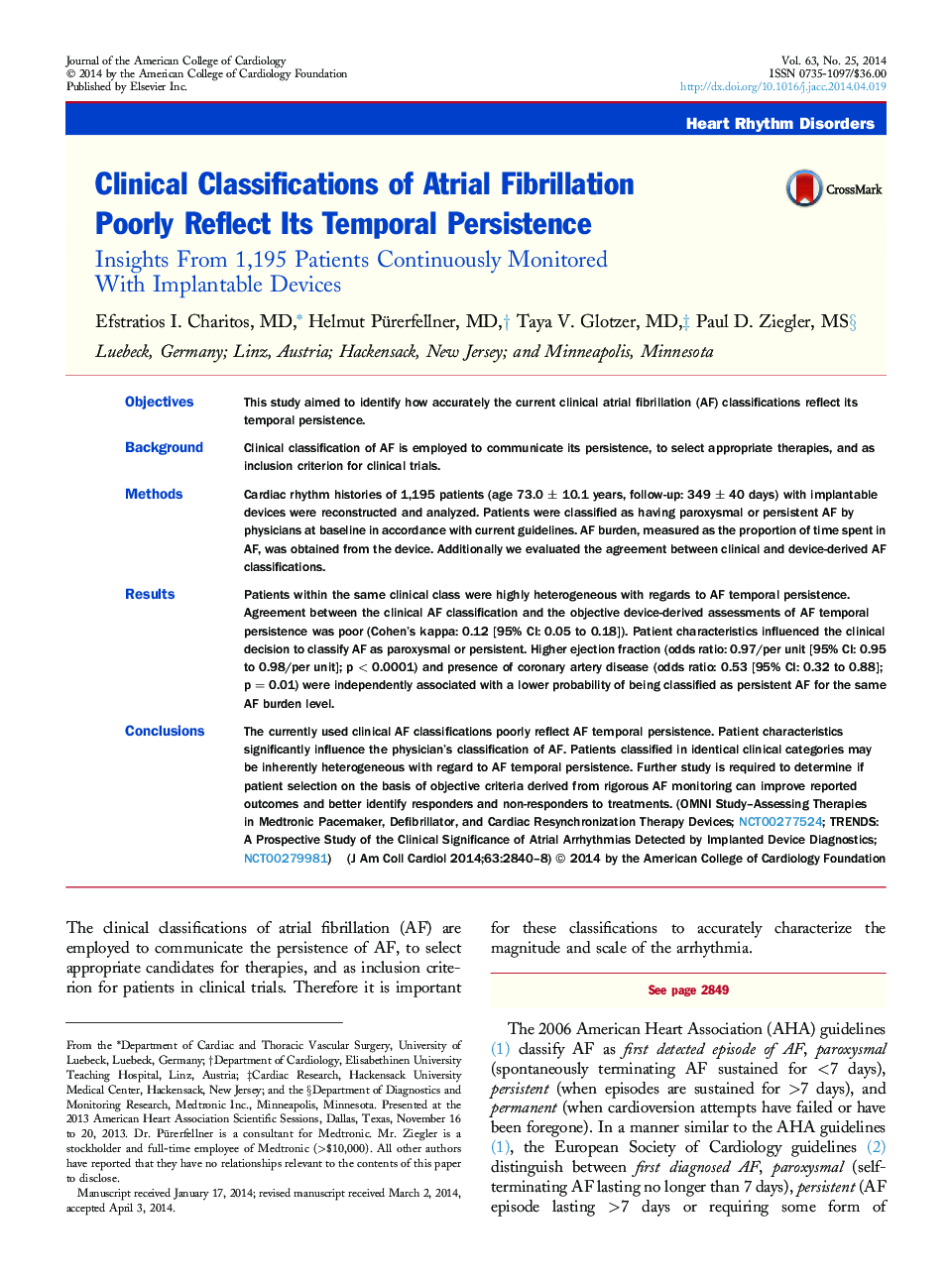| کد مقاله | کد نشریه | سال انتشار | مقاله انگلیسی | نسخه تمام متن |
|---|---|---|---|---|
| 2944053 | 1577097 | 2014 | 9 صفحه PDF | دانلود رایگان |
ObjectivesThis study aimed to identify how accurately the current clinical atrial fibrillation (AF) classifications reflect its temporal persistence.BackgroundClinical classification of AF is employed to communicate its persistence, to select appropriate therapies, and as inclusion criterion for clinical trials.MethodsCardiac rhythm histories of 1,195 patients (age 73.0 ± 10.1 years, follow-up: 349 ± 40 days) with implantable devices were reconstructed and analyzed. Patients were classified as having paroxysmal or persistent AF by physicians at baseline in accordance with current guidelines. AF burden, measured as the proportion of time spent in AF, was obtained from the device. Additionally we evaluated the agreement between clinical and device-derived AF classifications.ResultsPatients within the same clinical class were highly heterogeneous with regards to AF temporal persistence. Agreement between the clinical AF classification and the objective device-derived assessments of AF temporal persistence was poor (Cohen's kappa: 0.12 [95% CI: 0.05 to 0.18]). Patient characteristics influenced the clinical decision to classify AF as paroxysmal or persistent. Higher ejection fraction (odds ratio: 0.97/per unit [95% CI: 0.95 to 0.98/per unit]; p < 0.0001) and presence of coronary artery disease (odds ratio: 0.53 [95% CI: 0.32 to 0.88]; p = 0.01) were independently associated with a lower probability of being classified as persistent AF for the same AF burden level.ConclusionsThe currently used clinical AF classifications poorly reflect AF temporal persistence. Patient characteristics significantly influence the physician's classification of AF. Patients classified in identical clinical categories may be inherently heterogeneous with regard to AF temporal persistence. Further study is required to determine if patient selection on the basis of objective criteria derived from rigorous AF monitoring can improve reported outcomes and better identify responders and non-responders to treatments. (OMNI Study–Assessing Therapies in Medtronic Pacemaker, Defibrillator, and Cardiac Resynchronization Therapy Devices; NCT00277524; TRENDS: A Prospective Study of the Clinical Significance of Atrial Arrhythmias Detected by Implanted Device Diagnostics; NCT00279981)
Journal: Journal of the American College of Cardiology - Volume 63, Issue 25, Part A, 1 July 2014, Pages 2840–2848
